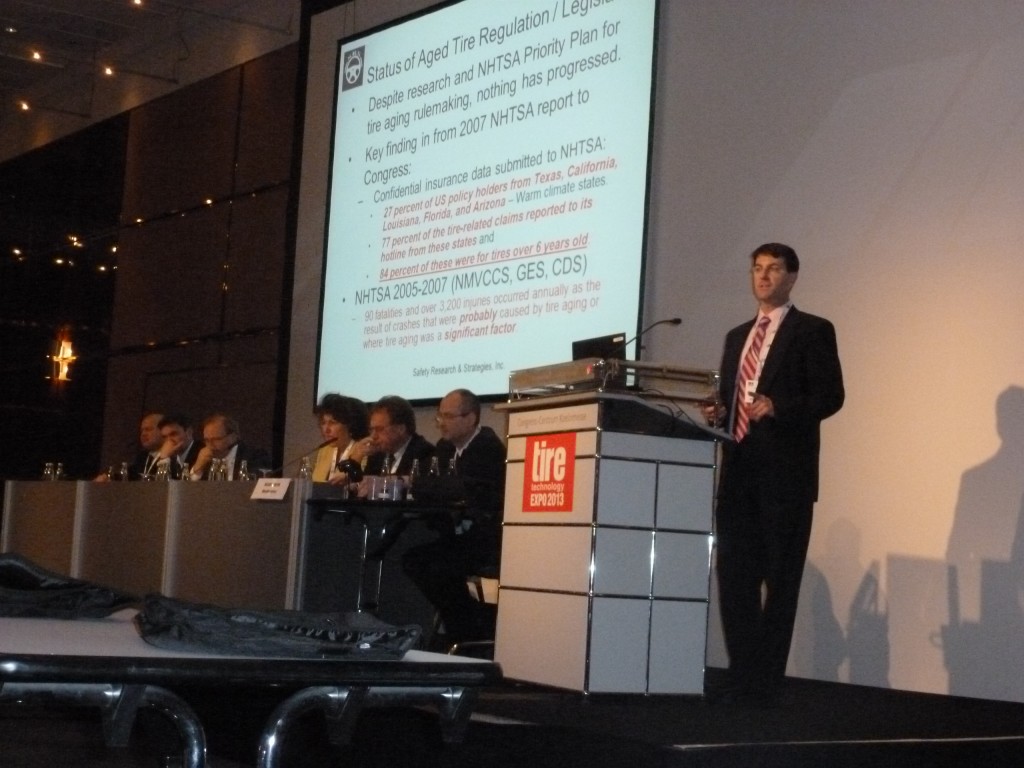We knew as far back as October 2011 that Ray LaHood was only going to be a one-term Secretary of Department of Transportation. And yesterday, he announced his imminent departure. Ray LaHood is a brilliant politician – all confidence and certainty, a loud combination of consumer-tough-guy-bluster-and-chamber-of-commerce-boosterism. He wasn’t afraid to take public stands no matter how misguided – we’ll give him that.
Admittedly, we are not close observers of the totality of LaHood’s activities. But we have traced LaHood’s fingerprints on technologically-rooted safety problems, and they have been a source of grim amusement. Without further introduction, we give you: SRS’s Top Ten Reasons We’ll Miss Ray LaHood
1. Top Illeist in the Obama Administration
An illeist is someone who refers to him or herself in the third person.
Like Ray telling PBS interviewer Gwen Ifill: “I think that Mr. Toyoda wouldn’t be here today if it weren’t for Ray LaHood calling him and our people going to Japan and telling them this is serious.” Or, Ray telling NPR talk show host Diane Rehm “Diane, you and I have had discussions about airline safety before on your show and you know that nobody cares as much about safety as Ray LaHood.”
Why does a person talk about himself that way? If you are under three years old, pediatricians considered a linguistic quirk of toddlerhood. If you are over thirty, psychologists consider it a narcissistic personality trait.
Move over, famous illeists, Richard Nixon, Herman Cain, Jimmy in Seinfeld and every professional athlete – and make room on the bench for Mister Ray LaHood.
2. Outstanding Projectionist
When Ray LaHood is annoyed – hoo-boy, don’t you know it. In February 2011, the National Highway Traffic Safety Administration released two reports purporting to resolve the question of whether electronics could be the source of Toyota Unintended Acceleration complaints. The agency kept a very tight lid on their release, handing them out to select journalists only an hour before the press conference. Both reports were lengthy, dense and highly redacted. But, writers gotta write and deadlines don’t move. Then Ray made the news show rounds complaining that the media hadn’t read the report. We read the reports, and re-read them, and we know, after listening to Ray’s characterization of its contents, that Ray did not read the reports, either.
Maybe in retirement, he’ll get around to it.
3. Undeterred by Facts
“The jury is back,” he announced. “The verdict is in. There is no electronic-based cause for unintended high-speed acceleration in Toyotas. Period.”
This pronouncement, more than any Ray LaHood made in his four-year tenure, really fried our butts.
The twin reports, Technical Assessment of Toyota Electronic Throttle Control (ETC) Systems and Technical Support to the National Highway Traffic Safety Administration on the Reported Toyota Motor Corporation Unintended Acceleration Investigation, actually said:
“Due to system complexity which will be described and the many possible electronic hardware and software systems interactions, it is not realistic to attempt to ‘prove’ that the ETCS-i cannot cause UAs. Today’s vehicles are sufficiently complex that no reasonable amount of analysis or testing can prove electronics and software have no errors. Therefore, absence of proof that the ETCS-i has caused a UA does not vindicate the system.”
The latter report, by the NASA Engineering Safety Center showed that there were several scenarios in which engine speed can be increased, RPMs can surge, and the throttle can be opened to various degrees in contradiction to the driver’s command, and not set a Diagnostic Trouble Code (DTC). Among those causes of electronic malfunction in some Toyota vehicles the investigators found were tin whiskers in the Accelerator Pedal Position Sensor (APPS) of potentiometer-type pedals. The NESC and NHTSA teams did not engage independent engineers with expertise in vehicle engine management design, validation and testing to assist them, they allowed Toyota and Exponent to guide this research. To boot, the lauded space agency never examined components from any vehicles that experienced high-speed UA events – the very focus of the lengthy technical tome.
LaHood’s willingness to elide the facts in favor of a sound-bite that puts the matter to rest hurt every Toyota owner.
4. Effective Policymaker Continue reading →
